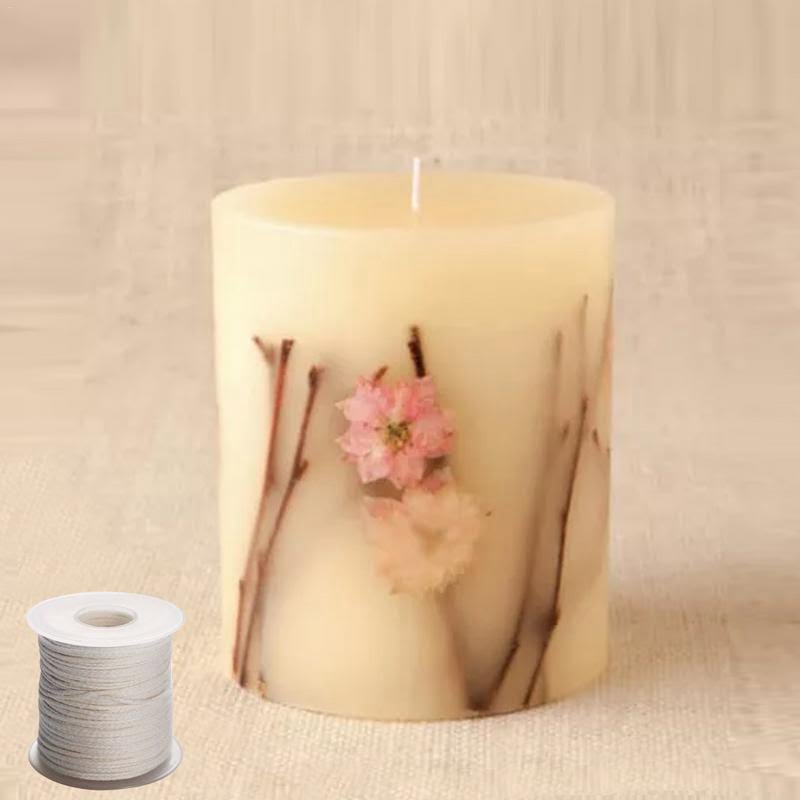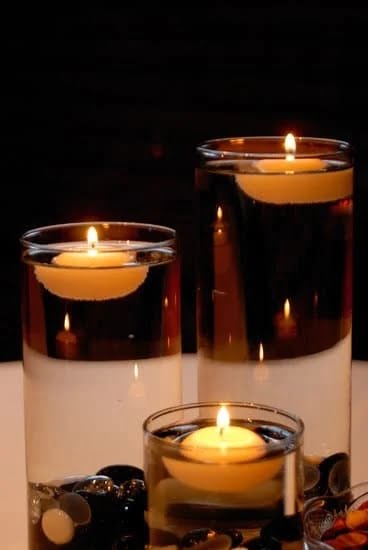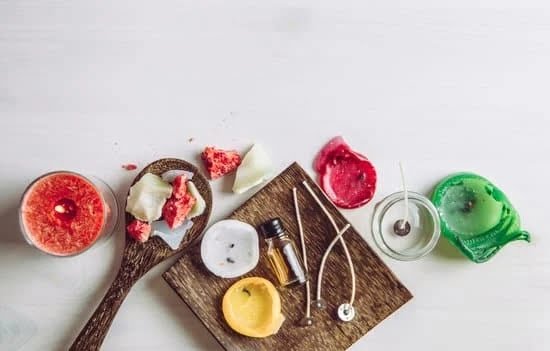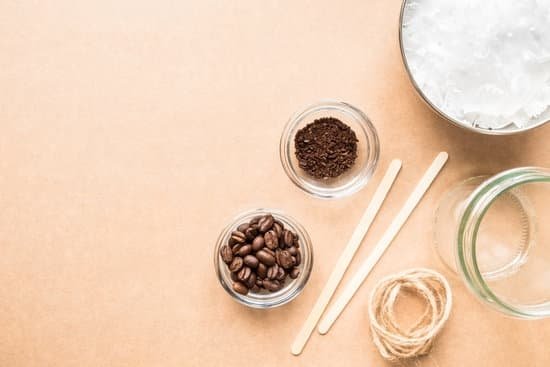Discover the secret to creating beautifully scented candles with the best essential oils. In this article, we will explore the growing trend of using essential oils in DIY candle making and highlight why they are a must-have ingredient for any candle enthusiast.
We will delve into the advantages of using essential oils over artificial fragrances, as well as how these natural oils can enhance the aromatherapy experience. Get ready to learn about the top essential oils that will take your candle making to a whole new level of fragrance and relaxation.
Gone are the days of generic, chemically-laden candles. More and more people are turning to essential oils as a way to personalize their candles with unique scents and enjoy the therapeutic benefits they provide. The advantages of using essential oils over artificial fragrances are numerous.
Not only do they offer a more natural aroma, but they also possess certain properties that can promote well-being and create a calming atmosphere. By infusing your candles with essential oils, you are not only creating beautiful scents but inviting wellness into your home.
Furthermore, if you enjoy practicing aromatherapy or simply love filling your space with delightful fragrances, essential oil-infused candles can help elevate your sensory experience. Each type of essential oil carries its own set of benefits and properties that can be catered towards various moods or purposes.
Whether you’re looking to relax after a long day, energize yourself in the morning, set a romantic ambiance or capture the essence of different seasons, there is an essential oil out there for every desired effect.
Join us on this aromatic journey as we dive into understanding different types of essential oils, discover their unique properties and benefits, as well as explore specific blends ideal for relaxation, energy-boosting, romance, and seasonal themed candles. Unleash your creativity and transform your candle-making process by incorporating these wonderful and versatile essential oils. Get ready to fill your space with the captivating scents and therapeutic experiences that only essential oils can provide.
Understanding Essential Oil Types
When it comes to candle making, understanding the different types of essential oils available is crucial for creating the perfect scent. Essential oils are derived from various plants and offer unique properties and benefits. Breaking down these different types can help you select the right essential oil for your specific candle projects.
There are several categories of essential oils, including citrus, floral, woody, herbal, and spicy. Each category offers distinct aromas that can add depth and complexity to your candles. Citrus oils such as lemon, orange, and grapefruit are known for their fresh and uplifting fragrances. Floral oils like lavender, jasmine, and rose provide a delicate and romantic scent. Woody oils such as cedarwood and sandalwood offer a warm and grounding aroma.
When selecting an essential oil type for your candles, consider the mood or theme you want to achieve. For relaxation candles, opt for calming scents like chamomile or ylang-ylang. If you’re looking to create an energizing atmosphere, choose citrus or minty oils like peppermint or eucalyptus.
| Essential Oil Type | Aroma Profile | Main Benefits |
|---|---|---|
| Citrus | Fresh, uplifting | Boosts mood and energy levels |
| Floral | Delicate, romantic | Soothes emotions and promotes relaxation |
| Woody | Warm, grounding | Creates a sense of stability and restfulness |
| Herbal | Clean, herbaceous | Refreshes and revitalizes the mind |
| Spicy | Rich, exotic | Elevates mood and creates a cozy atmosphere |
By understanding the different types of essential oils and their unique properties, you can create candles that not only smell wonderful but also provide various benefits. Experimenting with different combinations and blends of essential oils within each category can help you achieve your desired fragrance. Understanding essential oil types opens up a world of possibilities for creating personalized and aromatic candles that suit your specific preferences and needs.
Top Essential Oils for Relaxation
When it comes to creating a soothing and calming atmosphere, essential oils are a valuable tool in candle making. In this section, we will delve into the best essential oils known for their relaxation properties, allowing you to enhance your self-care routine or create a tranquil ambiance in your home.
Lavender is undoubtedly one of the most popular essential oils for relaxation. Its gentle floral scent has been used for centuries to promote sleep and reduce anxiety. Studies have shown that lavender oil can lower heart rate and blood pressure, inducing a state of deep relaxation. By incorporating lavender oil into your candles, you can create a serene space that helps alleviate stress and promotes better sleep.
Chamomile is another excellent choice for relaxation candles. Known for its soothing properties, chamomile oil has calming effects on the mind and body. It can help to alleviate symptoms of insomnia and anxiety, providing a sense of tranquility. Combining chamomile with other relaxing scents like lavender or ylang-ylang can amplify its benefits and create a truly peaceful atmosphere.
Ylang-ylang is a tropical flower native to Southeast Asia known for its exotic fragrance. The sweet and floral aroma of ylang-ylang oil has been used in aromatherapy for its calming and mood-enhancing properties. This essential oil can help reduce feelings of stress and promote emotional balance. Adding ylang-ylang oil to your relaxation candles will transport you to a serene paradise where worries melt away.
| Essential Oil | Properties/ Benefits |
|---|---|
| Lavender | Promotes sleep, reduces anxiety and stress |
| Chamomile | Soothes the mind and body, alleviates insomnia and anxiety symptoms |
| Ylang-ylang | Calming and mood-enhancing, reduces stress and promotes emotional balance |
By selecting the appropriate essential oils for your relaxation candles, you can create a serene environment that helps you unwind, destress, and find peace in your daily life. Experiment with different combinations of these oils to find the perfect blend that resonates with you.
Energizing Essential Oils for an Invigorating Candle Experience
When it comes to creating an invigorating candle experience, essential oils can play a key role in elevating mood and boosting energy levels. Certain scents have the ability to awaken the senses and create a vibrant atmosphere in any space. In this section, we will explore some of the best essential oils that can help you achieve an energizing candle experience.
Revitalizing Citrus Oils
Citrus oils are well-known for their refreshing and uplifting properties, making them perfect for an invigorating candle experience. Lemon, orange, and grapefruit essential oils are particularly effective in revitalizing the mind and body. The bright and zesty aroma of citrus oils has been shown to increase alertness and improve overall mood. These oils also have the added benefit of being excellent natural room deodorizers, adding a fresh twist to your candles.
Minty Fresh Scents
Peppermint and eucalyptus are two essential oils that are renowned for their invigorating qualities. The cool and minty aromas can promote mental clarity and stimulate focus. In addition to their energy-boosting effects, these oils also possess antiviral and antibacterial properties, which can help purify the air in your space. Consider using peppermint or eucalyptus essential oil in combination with other scents to create a unique and revitalizing fragrance for your candles.
Blending Energizing Scents
To create a truly invigorating candle experience, consider experimenting with different combinations of energizing scents. For example, combining citrus oils like lemon or orange with peppermint can result in a refreshing aroma that uplifts both mind and body. Similarly, pairing eucalyptus with other woody or herbal scents such as rosemary or sage can create an invigorating yet soothing ambiance. Don’t be afraid to get creative and find the perfect blend that resonates with your personal preferences.
By incorporating these energizing essential oils into your candle-making process, you can create an atmosphere that stimulates and uplifts. Whether you need a mood boost during a work-from-home session or want to infuse your space with positive energy, these oils can provide just the right touch.
Remember to follow proper guidelines for dilution ratios and conduct patch tests before using these oils in your candles. With the right combination of scents, you can transform any space into an invigorating oasis.
Romantic and Sensual Essential Oils for Intimate Candles
When it comes to creating a romantic atmosphere, the right scent can make all the difference. Essential oils have long been used for their sensuality and aphrodisiac properties, making them the perfect choice for intimate candles. Here are some top essential oils that exude sensuality and romance:
- Rose: Known as the ultimate symbol of love, rose essential oil is a staple in romantic candles. Its sweet floral aroma is both calming and uplifting, setting the mood for a cozy evening with your loved one.
- Jasmine: Another popular choice for sensual candles, jasmine essential oil has a rich and exotic fragrance that can ignite passion and desire. Its intoxicating aroma is often associated with enhancing confidence and boosting self-esteem.
- Ylang-Ylang: Derived from the flowers of the Cananga tree, ylang-ylang essential oil has a deeply relaxing and euphoric scent. It is believed to enhance sensuality, promote feelings of intimacy, and reduce stress levels.
To create a truly captivating ambiance, consider blending these oils together or combining them with other complementary scents like sandalwood or vanilla. The key is to experiment and find the combination that resonates most with you and your partner.
When using essential oils for intimate candles, it’s important to keep in mind that a little goes a long way. Start with a small amount of oil and gradually increase if needed. To ensure safety, always dilute essential oils properly before adding them to your candle wax or carrier oil.
Let your creativity flow as you explore different blends and combinations to enhance your intimate moments with the power of essential oils. Share your favorite recipes or experiences with others to inspire their own romantic candle creations. Together, we can create unforgettable memories filled with beautiful aromas and love in the air.
Best Essential Oils for Seasonal Candles
Introduction
Seasonal candles are a fantastic way to infuse your home with the spirit and scents of each season. Whether you want to create a cozy atmosphere in the winter or capture the refreshing essence of spring, using the right essential oils can elevate your candles to new heights.
In this section, we will explore some of the best essential oils for seasonal candles, discussing the warm and comforting scents for fall and winter, as well as the refreshing and vibrant fragrances for spring and summer.
Warm and Cozy Scents for Fall and Winter
As the temperatures drop and leaves start to fall, it’s time to cozy up indoors with comforting scents that perfectly embody autumn and winter. Cinnamon is a popular choice, known for its warming and spicy aroma that instantly evokes images of crackling fires and hot apple cider.
Vanilla is another wonderful option that adds a touch of sweetness to any candle, creating an inviting ambiance in your space. Other rich scents like clove, nutmeg, and ginger are great additions to fall and winter candles.
For those who prefer a more woodsy aroma, consider using essential oils like cedarwood or pine. These earthy scents bring a sense of nature inside your home during colder months. Additionally, fragrances such as frankincense or myrrh can add depth and complexity to your candles, creating an alluring ambiance that complements holiday gatherings.
Refreshing and Vibrant Scents for Spring and Summer
When spring arrives with blooming flowers and warmer days, fresh scents can help capture the essence of this rejuvenating season. Lemongrass is a popular choice for its crisp citrusy notes that invigorate the senses. Lavender is also an excellent option during springtime; its calming properties combined with its floral scent make it perfect for creating a relaxing atmosphere in your home.
As the summer heat intensifies, uplifting and cooling fragrances are ideal for creating a refreshing ambiance. Peppermint can provide a burst of coolness and energy, while eucalyptus has a menthol-like aroma that brings a breath of fresh air into any space. Additionally, scents like citrus fruits – lemon, orange, and grapefruit – are known for their revitalizing qualities and can make your summer candles even more enjoyable.
By selecting the appropriate essential oils based on the seasons, you can create candles that enhance the overall atmosphere of your home throughout the year. The right scents will not only evoke specific memories but also complement the natural changes in your surroundings, providing an immersive experience for both you and your guests.
Tips on Using Essential Oils in Candle Making
Share best practices for incorporating essential oils into your candle-making process
When using essential oils in candle making, it’s important to follow a few key tips to ensure the best results. Here are some best practices to keep in mind:
– Start with high-quality essential oils: Choose reputable brands that offer pure, undiluted essential oils without any additives. This ensures that you’re getting the full benefits and fragrance of the oil.
– Use the right quantity: The amount of essential oil you add to your candles will depend on several factors, including the type of oil and the size of your candle. As a general rule of thumb, a safe guideline is to use 1 ounce of fragrance oil per pound of wax. However, it’s always a good idea to check the specific recommendations provided by the manufacturer.
– Dilute when necessary: Some essential oils are stronger than others and may need to be diluted before being added to your candles. Carrier oils like coconut or jojoba oil can be used as dilution agents. Be sure to check if any specific dilution ratios are recommended for the particular essential oil you are using.
Address the appropriate quantity and dilution ratios for different oil types
Different types of essential oils have varying levels of strength and potency, which means they may require different quantities or dilution ratios when used in candle making. Here are some guidelines for popular essential oil types:
– Citrus oils (such as lemon, orange, or grapefruit): These oils tend to be lighter and less potent compared to others. As a result, you may need to use a slightly higher quantity when adding them to your candles. A good starting point is 6-8% concentration.
– Floral oils (such as lavender or rose): Floral oils can be quite potent and highly fragrant, so you may need lesser quantities compared to other oils. Aim for a concentration of 3-5% when incorporating floral essential oils into your candles.
– Woody or herbal oils (such as cedarwood or peppermint): These oils can have strong scents and may overpower the candle if used in large quantities. Start with a lower concentration of 2-4% and adjust according to your preference.
Provide guidance on properly infusing essential oils into wax or scenting oils
There are different methods you can use to incorporate essential oils into your candles, depending on the type of wax you’re using. Here are two common approaches:
– During the melting process: If you’re working with natural waxes like soy or beeswax, you can add the essential oil directly to the melted wax before pouring it into your candle container. Stir gently to ensure even distribution.
– Using scenting oils: Scenting oils are specifically formulated for candle making and act as carriers for fragrances. You can mix your chosen essential oil with the scenting oil at the recommended ratio, then add it to your melted wax. This method is particularly useful if you’re using paraffin wax.
By following these tips and understanding how to properly infuse essential oils into your candles, you can create beautifully scented creations that enhance any space and provide therapeutic benefits.
Lasting Aromas
Introduction to Essential Oil Notes and Fixatives
When it comes to creating unique and aromatic candles with essential oils, understanding the concept of essential oil notes and fixatives is key. The notes of an essential oil refer to its fragrance characteristics and how long they last in a candle.
On the other hand, fixatives are ingredients that help extend the aroma and provide a longer-lasting scent experience. In this section, we will explore the different types of essential oil notes, discuss fixatives, and offer suggestions for creating well-balanced scents in your candles.
Understanding Essential Oil Notes
Essential oils have three main classifications when it comes to their fragrance profiles – top notes, middle notes, and base notes. Top notes are light, fresh scents that are usually detected immediately upon lighting the candle. These fragrances tend to be uplifting and stimulating. Examples of top note essential oils include lemon, bergamot, and lime.
Middle notes are known as the heart of the fragrance and develop shortly after the candle has been lit. These scents add complexity and fullness to the overall aroma. Some popular middle note essential oils for candles include lavender, geranium, and clary sage.
Base notes are deeper aromas that take more time to reveal themselves in a candle’s scent throw. They anchor the fragrance profile of the candle and provide a lasting presence or foundation for other notes. Common base note essential oils used in candles include vanilla, patchouli, and sandalwood.
Using Fixatives for Lasting Aromas
Fixatives are substances that help slow down the evaporation rate of more volatile essential oil components. This results in a longer-lasting scent experience for your candles by allowing certain fragrances to linger for hours or even days. Popular fixative options include benzoin resin, frankincense resin, orris root powder, musk seed tincture, or vegetable glycerin.
When using fixatives, it’s important to note that a little goes a long way. Start with small amounts, such as a couple of drops or pinches, and gradually increase the quantity if desired. The amount of fixative needed will vary depending on the specific essential oil and the desired strength of the scent.
Creating Well-Balanced Scents
To create well-balanced scents in your candles, it’s important to consider the combination of different notes and fixatives. Experiment with blending different essential oils from each note category to create depth and complexity in your candle’s fragrance.
For example, you could combine citrusy top notes like lemon or bergamot with floral middle notes such as lavender or geranium, and anchor the scent using a base note like vanilla or sandalwood. This layering technique allows for a harmonious aroma that evolves over time as each note is revealed.
By understanding essential oil notes and fixatives, you can take your candle-making experience to new heights by creating candles that not only smell amazing but also provide a long-lasting aromatic experience. So go ahead, explore different combinations of notes and fixatives, let your creativity flow, and enjoy the beautiful scents that essential oils can bring to your candles.
Conclusion
In conclusion, essential oils are a must-have for anyone looking to create unique and aromatic candles. As explored throughout this article, essential oils offer numerous advantages over artificial fragrances, from their natural properties to their potential aromatherapy benefits. By understanding essential oil types and their specific benefits, candle makers can select the perfect oils for their projects.
For those seeking relaxation, essential oils like lavender, chamomile, and ylang-ylang have proven soothing and calming effects. Incorporating these oils into candles can help create a peaceful ambiance that promotes stress reduction and better sleep. On the other hand, energizing essential oils such as citrus oils like lemon, orange, and grapefruit or invigorating scents like peppermint and eucalyptus can boost energy levels and uplift mood.
Additionally, essential oils can bring sensuality and romance to candle creations with floral notes like rose, jasmine, or ylang-ylang. These oils exude an intimate ambiance that can enhance special moments or set a romantic atmosphere in any space. Moreover, by exploring the scents of different seasons with seasonal essential oils such as cinnamon for fall or lemongrass for summer, candle makers can evoke the spirit of each season.
By following tips on using essential oils in candle making and understanding the concept of fragrance notes and fixatives, candle enthusiasts can create well-balanced scents that last longer. The possibilities are endless when it comes to combining different essential oils and experimenting with blends.
In conclusion, incorporating essential oils into candle making allows for endless creativity and the creation of unique aromas that engage the senses. Whether you are seeking relaxation or energization or wanting to evoke different moods throughout the year, there is an essential oil perfect for your needs.
So go ahead – let your imagination run wild. Don’t forget to share your favorite essential oil candle recipes or experiences with others in the community who share your passion for creating beautiful and aromatic candles.

Welcome to my candle making blog! In this blog, I will be sharing my tips and tricks for making candles. I will also be sharing some of my favorite recipes.





